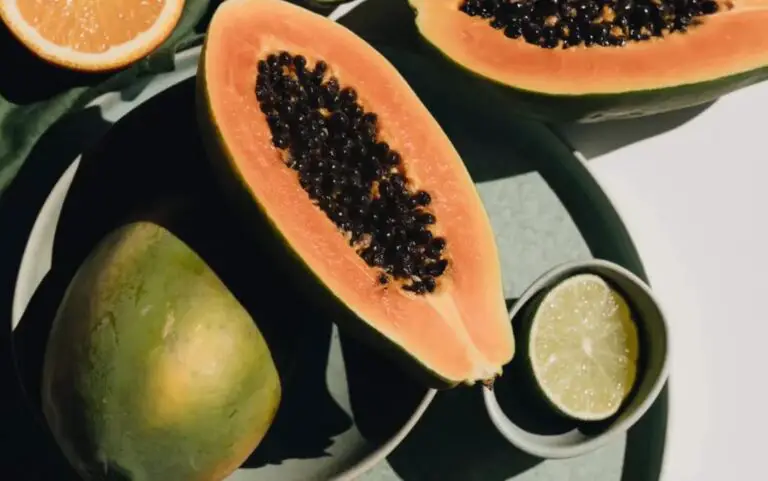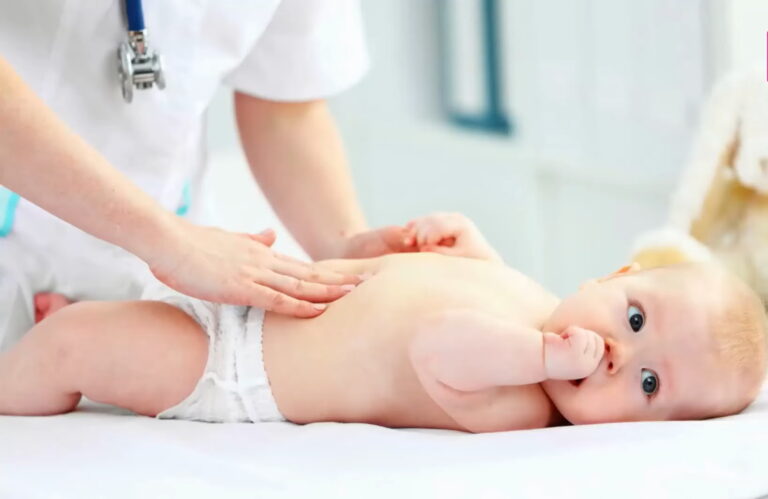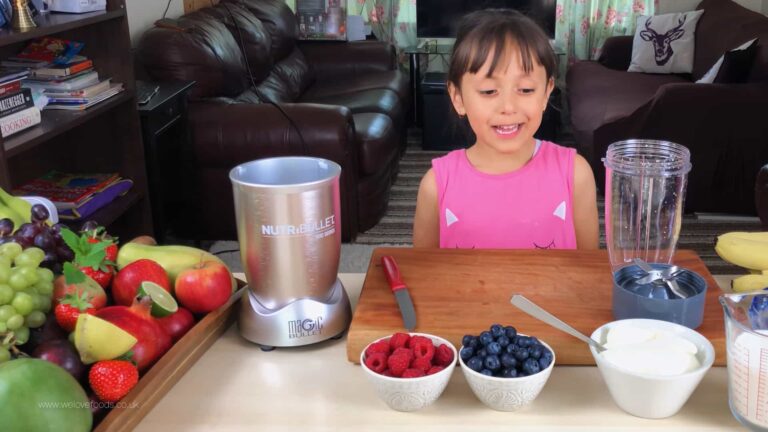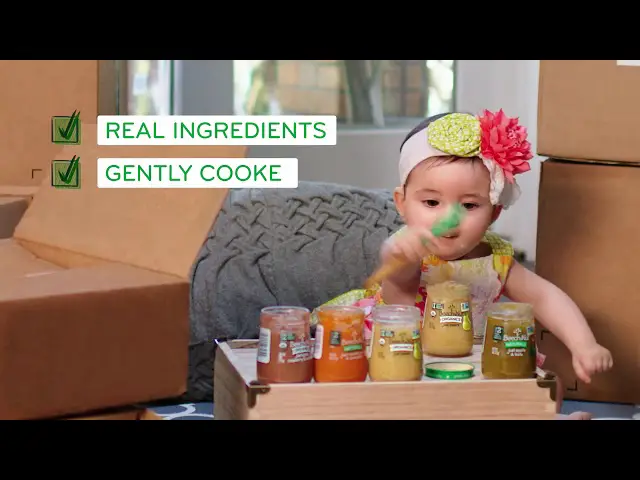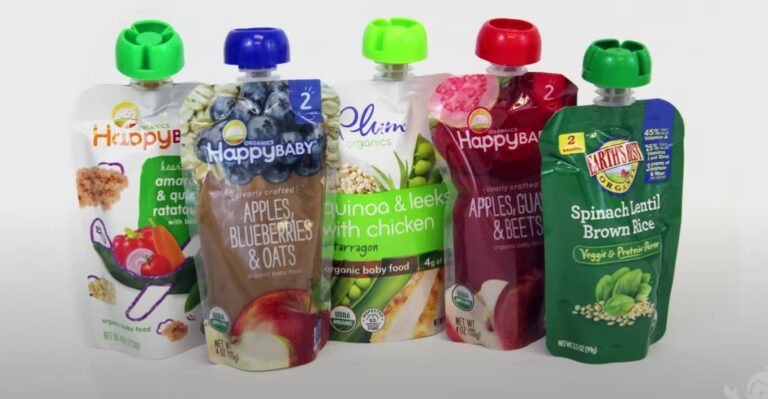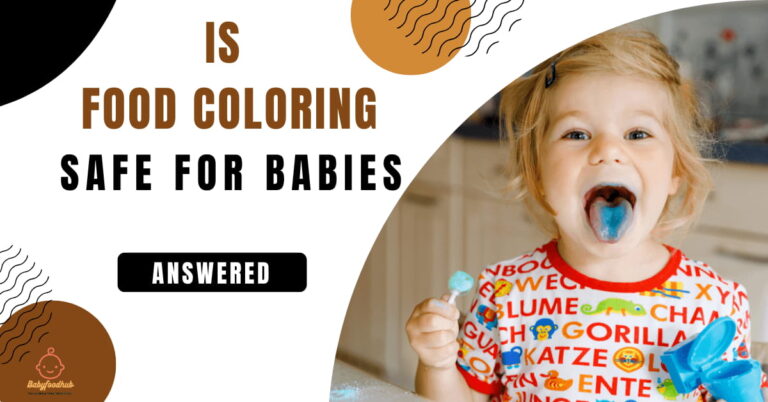Can I Microwave Baby Food? Safety & Nutrition Tips
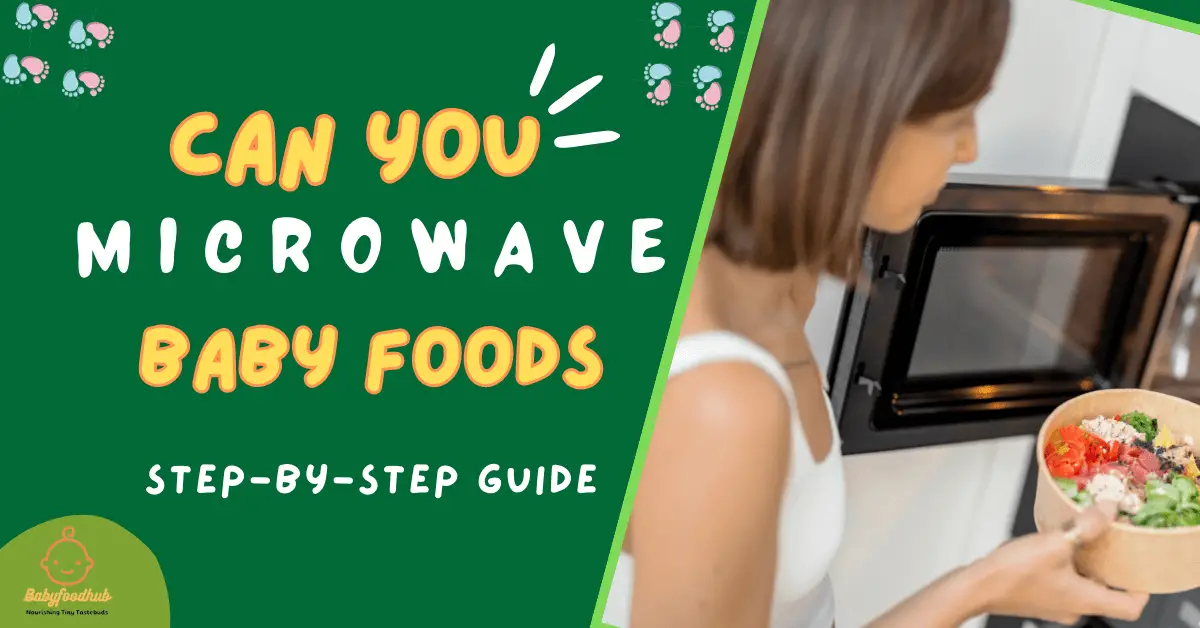
Yes, you can microwave baby food, but it’s essential to do so safely. Ensure the food is heated evenly to avoid hot spots.
When it comes to feeding your little one, you might have wondered if it’s okay to use the microwave to warm up their food. It’s a common question many moms and dads ask. Microwaves are super handy and can heat things fast, but when it comes to baby food, there are a few things to think about. Some parents worry that microwaving might make the food too hot in some spots and not warm enough in others, which could be a problem because babies’ mouths are very sensitive. There’s also a bit of a puzzle about whether microwaving can change the goodness of the food, like the vitamins and minerals that are so important for your baby’s growth.
So, in this post, we’re going to talk about how to use the microwave safely if you decide to warm your baby’s food in it. We’ll explore how to make sure the food heats up evenly, how to test the temperature, and what kinds of containers are best to use. By the end, you’ll have all the info you need to make sure your baby’s meals are not only yummy but also safe and healthy.
Safety Considerations
Warming baby food in the microwave can be a quick solution for busy caregivers. Yet, it’s vital to follow safety guidelines to protect your baby’s health. Understanding the right methods to microwave baby food ensures it heats evenly and is safe for your little one’s consumption.
Age-appropriate Food
When microwaving, consider the type of food and your child’s age. Here’s a checklist:
- Texture: Smooth and easy to swallow for babies under 6 months.
- Consistency: Thicker, with soft lumps, for babies over 6 months.
- Temperature: Test to make sure it’s warm, not hot.
Bpa-free Containers
Always use BPA-free containers for microwaving. Chemicals in certain plastics can leach into baby food when heated. Follow these tips:
- Check for a BPA-free label before using.
- Prefer glass containers if available.
- Never heat in plastic unless it’s BPA-free.
Avoid Metal Containers
Metal and microwaves do not mix. Here’s a short guide:
- Absolutely no metal: Metal can cause sparks.
- Use microwave-safe alternatives: Glass or BPA-free plastic.
- Read labels: Ensure containers are microwave-safe.
Proper Handling And Storage
Ensuring baby food is safe for your little one involves correct handling and storage. The way you store food can affect its quality and safety. Let’s delve into the best practices for refrigerating and freezing baby food, key steps every parent should follow.
Refrigeration
Keeping baby food in the fridge requires attention to detail. Here’s a quick guide:
- Seal it tight: Use airtight containers to keep food fresh.
- Check temperature: The fridge should be below 40°F (4°C).
- Label it: Write the date on the container.
- Use quickly: Eat refrigerated purées within 48 hours.
Freezing
Freezing is great for long-term storage. Follow these tips:
| Step | Action |
| 1 | Portion into ice-cube trays for easy use. |
| 2 | Cover with cling film, then freeze. |
| 3 | Once frozen, transfer to freezer bags. |
| 4 | Label bags with contents and date. |
| 5 | Use within one month. |
Note: Thaw overnight in the fridge or use a microwave. Always check the temperature before feeding.
Microwaving Baby Food
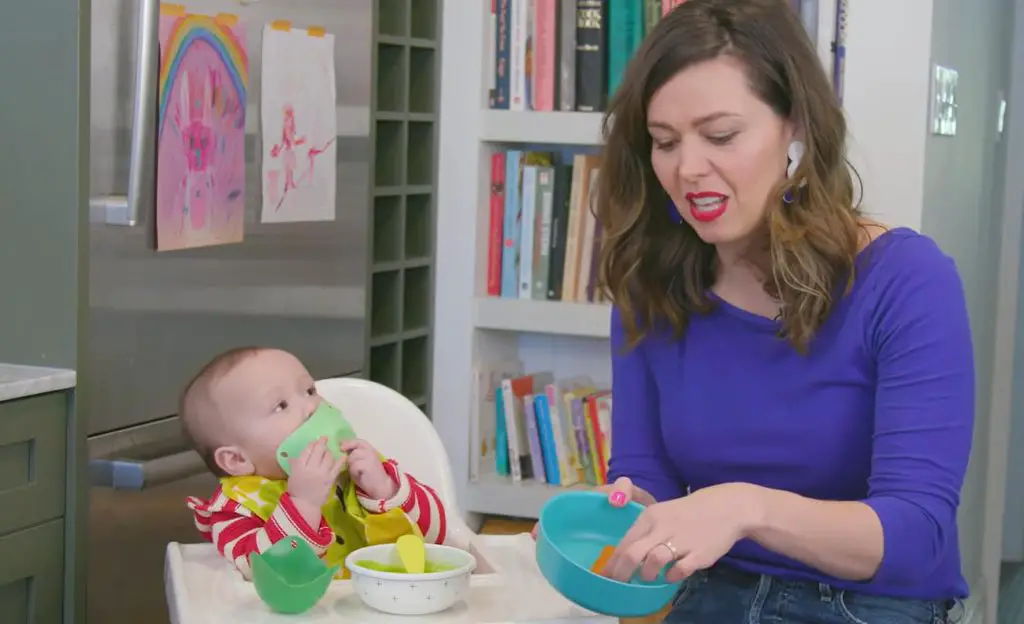
Is it safe to warm your baby’s food in the microwave? Absolutely! With the right precautions, you can provide a warm and nutritious meal for your little one. Discover how to do it safely below.
Using A Microwave-safe Container
The first step is to choose a microwave-safe container. This ensures even heating and no chemicals leaching. Here’s how:
- Check the bottom of the container for a microwave-safe symbol.
- Use glass or microwave-safe plastic.
- Avoid metal or single-use plastic containers.
Stirring And Testing The Temperature
After microwaving, stirring is mandatory. It eliminates hot spots and helps cool the food. Here’s the right method:
- Remove the container with care.
- Stir thoroughly to disperse heat.
- Test the food’s temperature before feeding.
Avoiding Hot Spots
Microwaves can create uneven heating. To prevent burns:
- Heat in short intervals, stirring in between.
- Let the food stand for a minute post-heating.
- Always test the temperature yourself.
By following these steps, microwaving baby food becomes a safe and convenient option for busy parents.
Advantages Of Microwaving
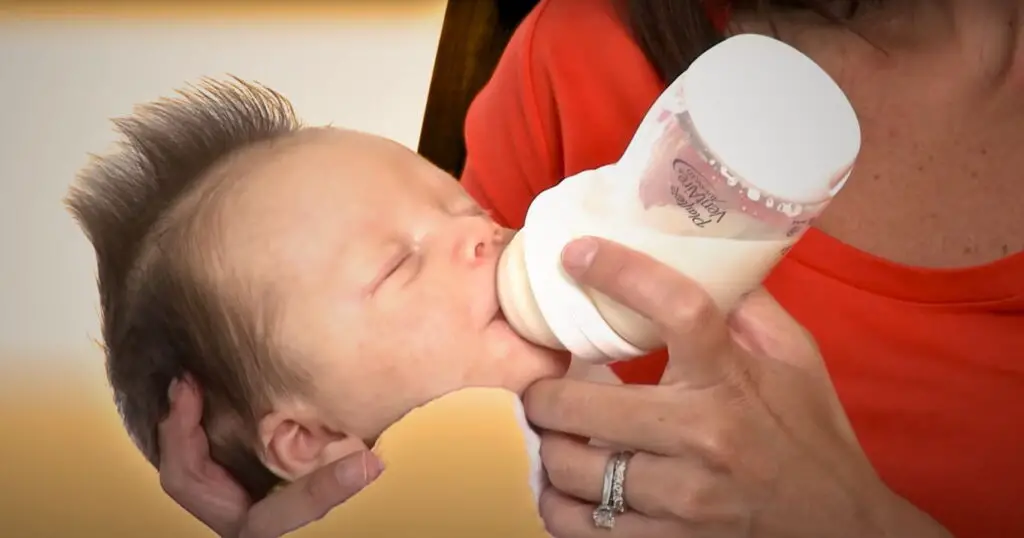
When parents face the hustle of daily routines, microwaving emerges as a beacon of efficiency. Microwaving baby food presents several benefits that ease the feeding process. Let’s explore the advantages of this modern kitchen convenience.
Quick And Convenient
Time is precious, and microwaves understand that. Heating baby food becomes a swift task with this appliance. Whether it’s thawing frozen purees or warming up last night’s leftovers, microwaving gets the meal ready in minutes. This quick method means less waiting and more time for playful giggles with your little one.
Retains Nutrients
Preserving the goodness of baby food is key to a healthy diet. Microwaves use less water and shorter cooking times compared to other methods. This helps to maintain vitamins and minerals often lost during long cooking processes. Properly microwaved food keeps essential nutrients intact, fuelling your baby’s growth spurts.
- Less water usage: Nutrients don’t leach out into cooking water.
- Reduced heat exposure: Vitamins stay preserved with limited cooking time.
Easier On Digestion
Soft and evenly warmed food is gentle on your baby’s delicate tummy. Microwave heating can provide a consistent texture that is easier for your little one to digest. An easy digestion contributes to happier meal times and a smoother introduction to new tastes and textures.
| Method | Consistency | Digestion Support |
| Microwaving | Soft & Even | Yes, promotes easy digestion |
Disadvantages Of Microwaving
Heating baby food in the microwave can be tempting. It’s fast and easy. But this common kitchen shortcut has drawbacks. Let’s explore.
Uneven Heating
Microwaves don’t always heat food evenly. This means some parts of the baby food might be hot, while others stay cold. It’s important for baby’s safety that their food is heated uniformly.
Loss Of Texture
The right texture is key for babies learning to eat. Microwaving can change the texture of foods. This may make it harder for babies to eat or dislike the food.
Formation Of Hot Spots
A big risk with microwaves is hot spots. These are areas that are much hotter than the rest of the food. They can arise even in liquids like formula or breast milk. Hot spots could burn your baby’s mouth.
| Disadvantage | Details | Impact on Baby |
| Uneven Heating | Food is not evenly warmed | Potential for unheated sections |
| Loss of Texture | Changes the feel of food | Can affect acceptance of food |
| Hot Spots | Areas that are too hot | Risk of burning |
- Stir baby food and test the temperature before serving.
- Check for hot spots to avoid burns.
- Consider alternatives such as water baths or slow heating.
Alternatives To Microwaving
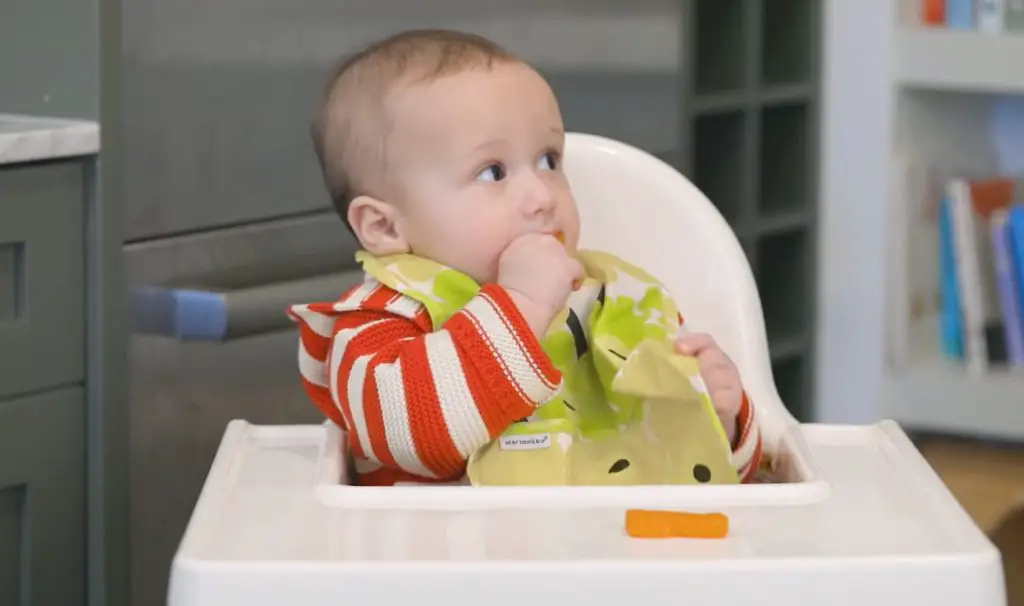
Parents often wonder about safe ways to warm baby food. Microwaving can cause hot spots. These alternatives keep the baby’s meal even and warm.
Stovetop Heating
Using the stovetop is a traditional method. Here’s how:
- Place baby food in a small saucepan.
- Heat over low flame.
- Stir constantly to avoid burning.
- Test the temperature before serving.
Always check the warmth with your finger. This ensures it’s safe for your baby.
Steamers
Steamers are a healthy choice. They preserve nutrients well. Follow these steps:
- Fill the steamer with water.
- Place baby food in the steamer basket.
- Wait until the steam heats the food through.
- Mash or puree if needed.
Steaming keeps the food nutrient-rich.
Baby Food Makers
Baby food makers are convenient. They steam and puree in one device. Using them is straightforward:
- Add chopped food and water to the maker.
- Set the correct program for your baby’s food.
- Once done, let it cool and serve.
Choose a baby food maker for an all-in-one solution.
Common Misconceptions
When it comes to heating baby food, questions and concerns often arise. Are microwaves safe? Do they sap the nutrition out of your baby’s meal? Let’s bust some common myths and get to the facts!
Microwaving Causes Cancer
One widespread myth is that using microwaves can cause cancer. This isn’t true. Microwaves heat food using non-ionizing radiation. This type of radiation doesn’t make food radioactive or carcinogenic. It’s similar to the heat from the sun. But, don’t stand too close to the microwave. Your food will be safe, and so will you.
Microwaving Destroys Nutrients
Another common concern is that microwaving baby food destroys its nutrients. Guess what? That’s a myth, too. All cooking methods change food’s nutrient profile, some more than others. Not just microwaves. Microwaving can retain more nutrients compared to boiling, where vitamins can leach out into the water. Just make sure to heat the food evenly to keep your baby smiling at mealtime.
Recommendations From Experts
Welcome to the ‘Recommendations from experts’ section of our discussion on microwaving baby food. Parents often wonder about the safety and nutritional impact of heating baby food in a microwave. Here, we’ll guide child nutrition specialists to help make mealtime both convenient and healthy.
Consulting With Pediatricians
Before using a microwave for your baby’s food, chat with a pediatrician. Experts in child health can offer tailored advice for your little one. They can suggest the best ways to heat food while maintaining its nutrients. Pediatricians often stress the importance of:
- Avoiding hot spots in food that could burn your baby’s mouth.
- Check the food temperature thoroughly before feeding.
- Stirring food evenly to ensure consistent warmth throughout.
Following Baby Food Guidelines
Experts provide specific guidelines when it comes to microwaving baby food. It is vital to follow these steps to keep your baby safe and well-fed. Carefully heed the following advice:
- Select suitable containers: Use microwave-safe dishes to avoid chemical leaching.
- Start with less time: Heat gradually to prevent overheating.
- Cover the dish: This steams food evenly and avoids drying out.
- Always test the temperature: Food should be warm, not hot, to the touch.
Using a microwave can be a quick way to warm up your baby’s meal. It requires careful attention to detail to ensure the meal is safe. Keep the food’s texture soft and easy to digest.
Remember, every baby responds differently to textures and temperatures. Personalize your approach for your baby’s comfort and safety.
Credit: health.clevelandclinic.org
Frequently Asked Questions On Can I Microwave Baby Food?
Is It Safe To Microwave Baby Food?
Yes, microwaving baby food is safe, but stir it well to eliminate hotspots and test the temperature before feeding. Always transfer food to a microwave-safe dish.
How Do You Warm Up Baby Food?
To warm up baby food, use a microwave or stovetop to heat it gently. Stir it well to ensure even warmth and always test the temperature before feeding to avoid burns.
Why Can’t I Microwave Baby Food?
Microwaving baby food can lead to uneven heating, creating hotspots that might burn your infant’s mouth. Always heat baby food on the stove or in a hot water bath, stirring well to ensure even warmth throughout the meal. Test the temperature before feeding your baby.
Do You Have To Microwave Gerber Baby Food?
No, you don’t have to microwave Gerber baby food. Serve it at room temperature or warm it if desired, ensuring it’s evenly heated to a safe temperature. Always test the warmth before feeding.
Is Microwaving Baby Food Safe?
Microwaving baby food is generally safe if you stir it well to prevent hot spots that might burn your baby’s mouth and test the temperature before feeding.
Conclusion
Warming baby food in a microwave can be quick and convenient. Always ensure it’s heated evenly and test the temperature before serving. Remember, stir thoroughly to avoid hotspots. For hassle-free meal times, microwaving baby food, when done carefully, is a safe bet.
Your child’s safety is paramount—never compromise on it.

